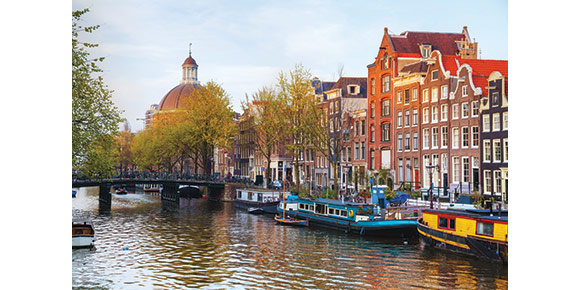Every country has its own capital city, its seat of government, but how did these cities get their names?
Often, place names arise for geographical reasons. Ottawa is named for the river whereon it sits. The river’s name is from an Algonquian word probably meaning, “big river.”
Amsterdam takes its name from the Amstal Dam, the River Amstal’s original dike. Russia’s Moscow comes from the river that runs through it — the Moskva. How the river’s name arose is unknown.
Bangkok, Thailand’s capital, means “region of olive trees.” It is from bang (region) and kok (olive tree).
Some names commemorate someone famous. Washington is named for George Washington, first president of the United States. Washington’s literal meaning is, “settlement of Wassa’s people.” Wassa, an Anglo-Saxon personal name, apparently meant “hunting victory.”
Wellington, New Zealand, founded in 1840, is named for the victor of the Battle of Waterloo, the Duke of Wellington. Kingston, Jamaica, honours England’s King William III. Valetta, capital of Malta, is named in memory of Jean Parizot de la Valette, the French general who founded the city in 1516.
Kiev, now spelled Kyiv, is Ukraine’s capital. This ancient city (ninth century) is nicknamed, “The Mother of Russian Cities,” and is probably named for the legendary Prince Kyi. Peru’s capital, Lima, is a Spanish version of the Quechan name, Remak, which evolved from the name of the god, Rima Rima, and means “speak.”
Some names are simple translations or descriptions. Iceland’s capital, Reykjavik, means “bay of smoke,” a reference to the vapours emitted by the island’s natural hot springs. Beijing, official name of China’s capital, was once called Peking. It comes from bei (north) and jing (capital). Tokyo’s meaning, “Eastern capital,” is from to (east) and kyo (capital).
Copenhagen (merchants port) is from the Danish køber (merchant) and havn (port; harbour). Katmandu (Nepal) is Nepalese for “wooden temples.” The capital of Ethiopia, Addis Ababa, is Amharic for “flower.” Buenos Aires, Argentina, is Spanish for “good breezes.”
Manila arises from the Tagalog words may (there is) and nila, a shrub of the indigo family indigenous to The Philippines. Canberra, capital of Australia, is likely from the Aboriginal nganbirra (meeting place).
Place names often undergo change, sometimes because of a negative perception. For example, Berlin, Ontario, became Kitchener during the First World War. Sometimes, names are altered to honour a person or god. Sometimes, a new power takes over. Some changes occur because of spelling corrections.
The capital of Myanmar (formerly Burma) was Rangoon. In 1989, the spelling was altered to reflect the Burmese spelling, Yangun (peaceful). The city’s new spelling is Yangon.
Budapest, Hungary, is the compound name formed when the towns of Buda, on the Danube’s right bank, and Pest, on the left bank, amalgamated. Pest is from the Slavic pêst (oven; furnace). Buda, Attila’s brother, founded the town of Buda.
Helsinki, founded in 1550 by King Gustav Vasa of Sweden, was named Helsingfors — from Helsing (a Norwegian tribal name) and fors (waterfall). Helsinki is the Finnish version of Helsingfors.
Some place names are puzzles. We’ll look at a few of those next week.



